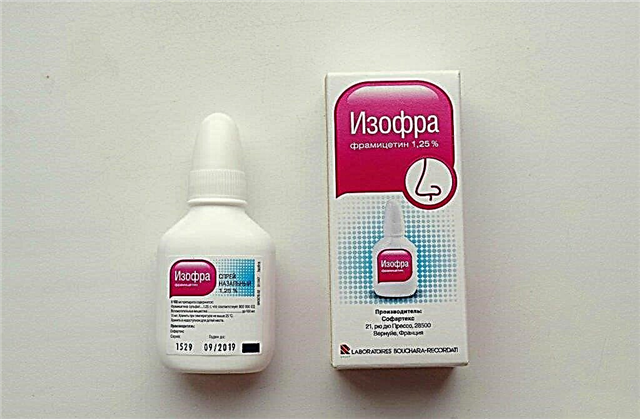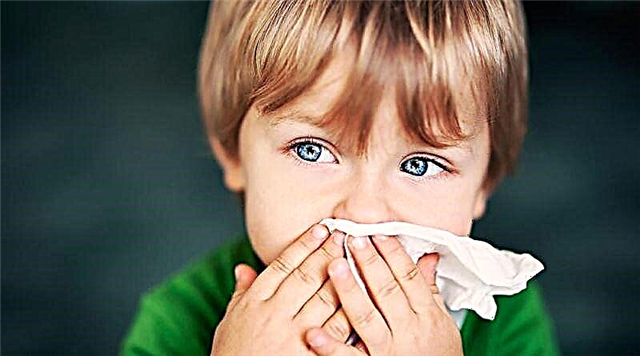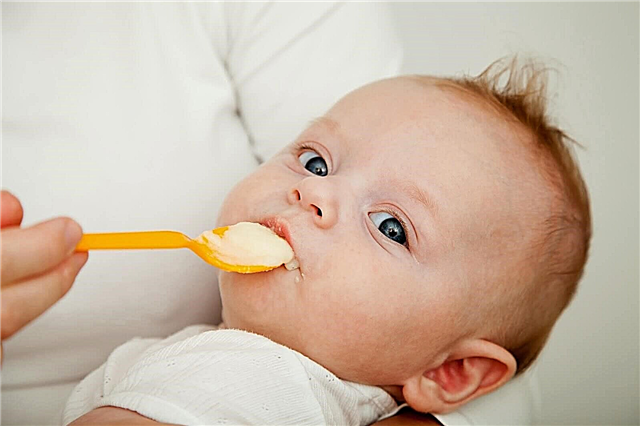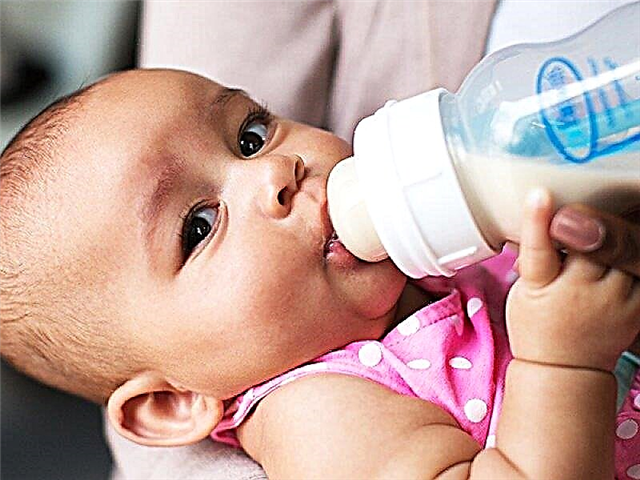Colds in children are often accompanied by a runny nose. It can be treated in different ways: with medications, traditional medicine methods, inhalation. When choosing the latter method, it is convenient to use a nebulizer. We will tell you how to perform inhalation with a cold with a nebulizer.
Nebulizer and its types
A nebulizer is a medical device that converts a liquid medication into an aerosol or vapor. The device uses electricity to produce compressed air, which converts the liquid form of the medication into vapor.
The nebulizer consists of three parts: a machine, a spray cup and a face mask. The medicine or solution is placed in a cup and connected to the face mask and machine using a tube. Then the mask is applied to the child's face and the machine turns on. After 5 to 10 minutes, the medicine in the cup turns into white vapor. All the child has to do is breathe. The nebulizer is suitable for babies, it is an affordable way to get the medicine into the respiratory tract, bringing maximum benefit.

There is a huge selection of different inhalation devices, and each one has some unique features, although they all work in the same way.
Types of nebulizers by size:
- stationary - these are large, strong nebulizers. They are durable and most have a longer warranty period. They are cheaper than mobile nebulizers. Mostly stationary nebulizers are used indoors and rarely outdoors.
- mobile nebulizers. These nebulizers can be carried with you. They have alternative power supplies such as batteries or auto adapters that allow them to be used in locations where there is no or limited access to AC power. Because they are inherently mobile, these sprayers are lighter than stationary ones and also smaller in size.
Types by principle of action:
- a compressor (jet) nebulizer uses compressed air to transport drugs to the respiratory tract. This device has a compressor that converts the medication solution into vapors. This is the preferred type for suspension drugs. The disadvantage of a jet spray is its noise and weight.
- the ultrasonic nebulizer contains a transducer instead of a compressor. The transducer is a crystal. It produces ultrasonic waves that convert the medicinal liquid into vapors. Ultrasonic nebulizers are quiet. There are even portable, battery-operated ultrasonic nebulizers.
However, this nebulizer is not compatible with some drugs for the treatment of respiratory diseases. There are drugs that become ineffective when they are vaporized by ultrasound. Some may even cause negative consequences for the patient;
- Electro-mesh (mesh) nebulizers are considered the fastest devices and are more expensive than other nebulizers. It generates monodisperse aerosol particles from 4.5 to 5 microns, for which a vibrating membrane is used.
Available in a compact and portable body, it is ideal for transporting when traveling and use when needed. The mesh nebulizer requires proper care, thorough cleaning, since the membrane is more susceptible to blocking and needs to be replaced many times throughout the year for a good inhalation process.
Benefits of inhalation treatment for a cold

There are several methods for administering drugs:
- oral (syrups, tablets);
- injections (intramuscular or intravenous);
- topical application of drugs (sprays or drops);
- inhalation.
Nasal drops from the nasal cavity quickly drain into the oropharynx, which is associated with their short-term effect. And with a large swelling of the mucous membrane and abundant secretions, the use of vasoconstrictors is ineffective.
The active elements of syrups and tablets begin their effect only after a long journey through the body: the intestines, the circulatory system, and only then - the respiratory organs. Some of the active elements by the time they enter the tissues of the respiratory system lose their therapeutic properties, so this method cannot be considered optimal for the treatment of rhinitis and colds.
Injections are often perceived negatively due to pain and possible complications in the form of bruises and lumps at the injection site. In addition, a runny nose is not life-threatening enough to be treated with injections.
The use of inhalations for the administration of drugs does not bring pain and negative sensations, and also provides a direct hit of the drug into the respiratory tract. Another advantage of using a nebulizer is the long-term effect of the drug on the respiratory system. The drug, injected with a nebulizer, works continuously for several minutes, which significantly increases the therapeutic effect. This treatment is ideal for children.
Choosing a nebulizer to treat a cold

In the past, the use of a nebulizer was associated with the treatment of chronic obstructive respiratory diseases only. Today, their effectiveness has made nebulizers a necessary medical device in every family. They are especially necessary for the treatment of babies, when it is impossible to treat with pills, and injections cause a negative emotional reaction.
A nebulizer for a cold in children is gradually replacing a steam inhaler and is in the first place among the methods of inhalation therapy.
When choosing a device for the treatment of rhinitis, be sure to consider the particle size change function. The best choice is a nebulizer that generates particles over 10 microns. Smaller particles enter the respiratory tract without remaining in the nasopharynx. It is also important to pay attention to the gas speed indicators, these values should be 6 - 10 liters per minute.
Preparations for inhalation
You should carefully study the instructions for the nebulizer and determine which medications can be used. Many nebulizers function only with industrial solutions and do not allow the use of homemade herbal decoctions, oil solutions, and vegetable juices. These liquids, if they enter the lungs, can harm the health of the child, as well as damage the device.

All medicines for the treatment of rhinitis in children with a nebulizer are prescribed only by a doctor after examination and diagnosis.
For rhinitis, the following drugs for inhalation with a nebulizer will be effective.
- Interferon. Medicinal substance that activates the production of antiviral protein substances. It is an effective remedy exclusively for viral infections. Interferon is not absorbed from the mucous membranes of the respiratory tract and acts locally (at the site of contact). Therefore, interferon is used in the form of drops or inhalation in the first three days of illness. The medicine is destroyed when heated above 37 ° C, so it can only be used without using the heating function. Interferon inhalation will be more effective if you choose a device to spray 5 microns or more. During inhalation, the drug is evenly dispersed over the mucous membrane, and its effect will be noticeably greater than when using drops or sprays. Solution preparation: 1 ampoule of the drug for 2 - 3 ml of distilled water - the volume of the solution for 1 inhalation. The procedure can be done 2 to 4 times a day.
- Xylometazoline.Used for inhalation for nasal congestion. The medication belongs to the group of vasoconstrictor substances and is available in different concentrations. It is contraindicated in children under 2 years of age. Inhalation with xylometazoline solution can only be performed on the advice of a specialist.
- Isofra.The medicine is intended to treat the common cold of bacterial genesis. Advantages of use: nebulizer inhalation is suitable for newborns. Prepare the solution: 3 ml of saline and 1 dose of Isofra. For maximum effect, the procedure is performed twice a day.
- "Rinofluimucil".It is used for coryza with profuse and thick discharge. Using a nebulizer will help treat even the most persistent forms of the common cold. Children under 3 years of age are contraindicated. The concentration of the solution is determined by the doctor in each case individually.
- "Polydexa".The drug is based on two antibiotics. It is necessary to use only on the recommendation of a specialist, since this medicine belongs to the means of a hormonal nature. Inhalation is possible for children from 2.5 years old who do not have chronic cardiovascular diseases. Solution preparation: 1 dose of the agent should be dissolved in 3 ml of physiological solution.
- Sodium bicarbonate.It dilutes mucus, reduces its secretion, helps the discharge of sputum and mucus, creates an alkaline environment in the area of inflammation, reduces edema. It is used for any diseases of the respiratory tract. A 2% solution of soda is used: 2 - 3 ml for 1 procedure.
- Sodium chloride.0.9% solution well moisturizes the nasal mucosa, softens it, eliminates irritation. Sodium chloride at room temperature is used for diseases of the upper and lower respiratory tract from the first days of the disease, but it is necessary to choose the correct size of the sprayed particles. Can be reused every 2 to 3 hours.
The temperature of the nebulizer solution for a cold should be below 20 - 22 ° C. By using a nebulizer, you will achieve noticeable results in a short time. All medicinal aerosols that enter the most distant places of the nasal passages have a mild but long-lasting effect.
Adverse reactions when using a nebulizer
The nebulizer as an equipment is quite safe to use. In fact, it is safer than steam inhalers as there is no risk of hot water spilling. The aerosol that comes out of the nebulizer is slightly cool, so there is no danger of scalding (unlike the effects of steam).
The rare and few side effects are mostly related to the medications used, especially if the child has been asked to take inhaled steroids.
The following side effects are encountered:
- dry or irritated throat;
- unpleasant taste in the mouth;
- nausea;
- heartburn.
More serious reactions are very rare:
- bleeding;
- dizziness;
- abdominal pain.
Tips for an inhalation session
- Help your child avoid mask fear. Most children are afraid of the mask. Therefore, make it attractive in the eyes of the child. Say it's a mask worn by a fighter pilot or an astronaut mask.
- Make inhalation routine. Children quickly adapt to the procedures. Performing procedures every day at a specific time will help them quickly get used to it.
- Personalize your device. Let your child decorate the nebulizer with artwork or stickers of their choice.
- Make it fun. Make time during which the child should sit quietly, cheerful and attractive. Sing songs, read stories, watch cartoons. Do not engage in activities such as painting where the child must look down (this will change the position of the mask and jeopardize the amount of medication entering the respiratory tract).
- Help your child sit comfortably. See what's right for your child. Maybe a high chair? Or is it more comfortable for him to be on his mother's lap? Make sure the child is well positioned to maintain this position for 10 to 15 minutes. Remember that if the mask is even 1 cm away from the face, the amount of drug entering the child's respiratory tract is drastically reduced.
- Encourage your child to breathe deeply by example. Put on the mask yourself. Most nebulizer kits come with two masks. Take another so that the child is not alone.
- Be positive about the treatment. A nebulizer, although safe, should be used to treat the common cold properly. Always consult a professional before use. Inhalation must be done with a doctor's prescription to ensure the safety and well-being of the child.
Article rating:



